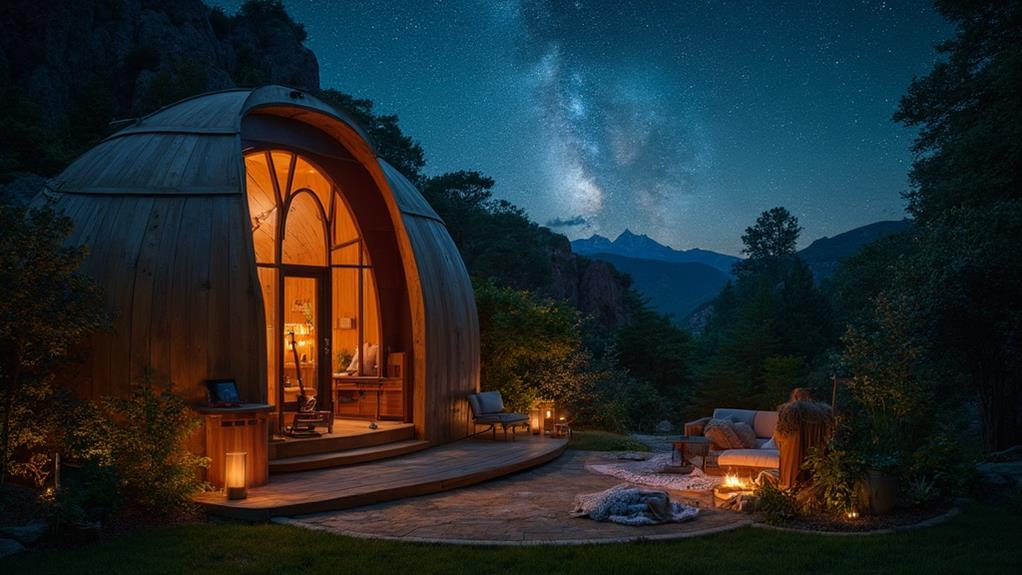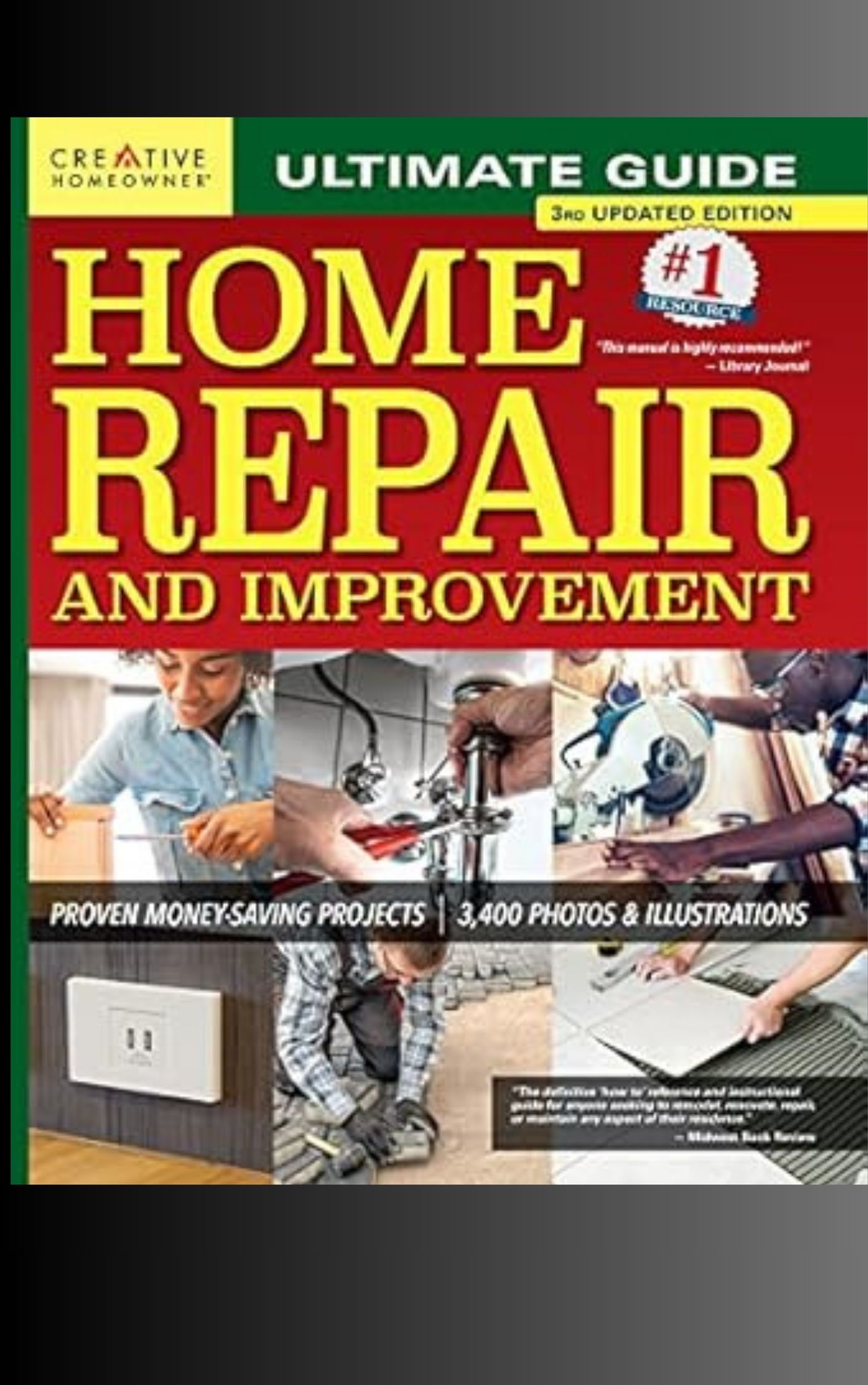Creating a perfect backyard observatory involves careful planning and consideration. Start by selecting an ideal location with minimal light pollution and good visibility. Design a structure that suits your needs, incorporating features like a sturdy foundation and proper ventilation. Choose high-quality equipment, including a telescope and necessary accessories. Ensure adequate power and connectivity for your instruments. Add comfort features to enhance your stargazing experience. Implement regular maintenance routines and protect your observatory from environmental factors. With the right approach, you can transform your backyard into a personal gateway to the cosmos.
Choosing the Ideal Location
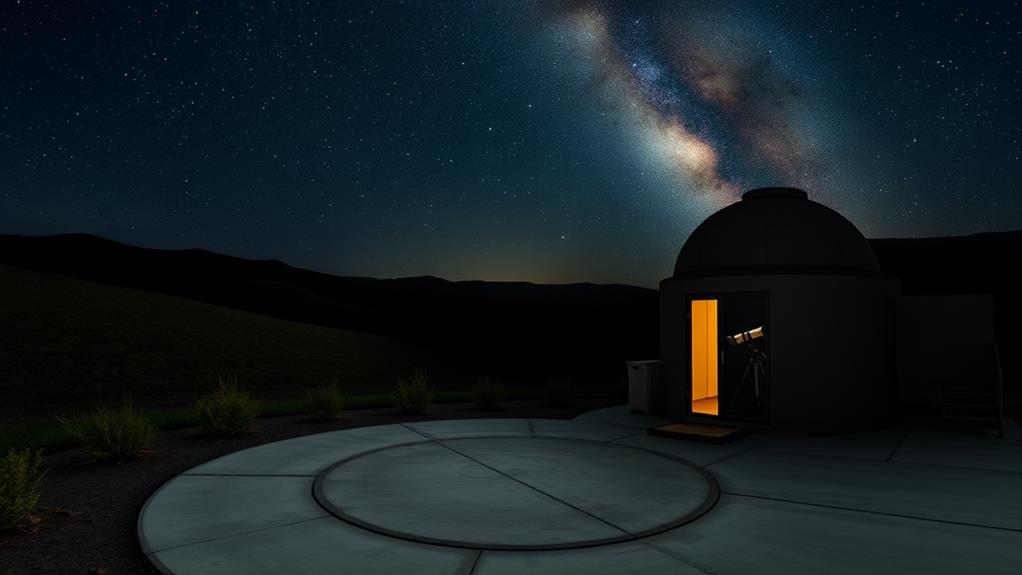
When selecting a location for your backyard observatory, several crucial factors must be considered. The primary concern is minimizing light pollution, which can significantly impact the quality of astronomical observations. Choose a spot as far away as possible from artificial light sources, including streetlights and neighboring houses. Additionally, ensure the area has a clear view of the sky, free from obstructions like tall trees or buildings.
The ground should be stable and level to provide a solid foundation for your observatory and equipment. Avoid areas prone to flooding or excessive moisture, as these conditions can damage sensitive instruments. Consider accessibility, especially if you plan to transport heavy equipment. A location close to your home with a paved path can make setup and maintenance more convenient.
Wind exposure is another important factor. While some airflow is beneficial for reducing moisture buildup, excessive wind can cause vibrations that affect observations. Natural windbreaks, such as hedges or fences, can help mitigate this issue. Lastly, check local zoning regulations and homeowners' association rules to ensure compliance before beginning construction on your backyard observatory.
Designing Your Observatory Structure
The design of your backyard observatory structure is crucial for creating an optimal viewing environment and protecting your astronomical equipment. When planning your observatory, consider a roll-off roof or dome design. Roll-off roofs are simpler to construct and provide a wide-open view of the sky, while domes offer better protection from wind and light pollution but are more complex and expensive.
Choose materials that can withstand local weather conditions and minimize thermal expansion. Insulation is important to prevent condensation and maintain a stable temperature. Incorporate proper ventilation to equalize interior and exterior temperatures quickly, reducing atmospheric disturbances.
Design the floor to be sturdy and vibration-free, ideally using a separate foundation from the main structure. Include ample storage space for equipment and consider adding a small workspace for computer equipment and note-taking.
Ensure your observatory has reliable electrical power, including backup options. Install red lighting to preserve night vision and plan for data and communication connections. Finally, make provisions for securing your valuable equipment when not in use, such as lockable cabinets or a reinforced door.
Essential Equipment for Stargazing
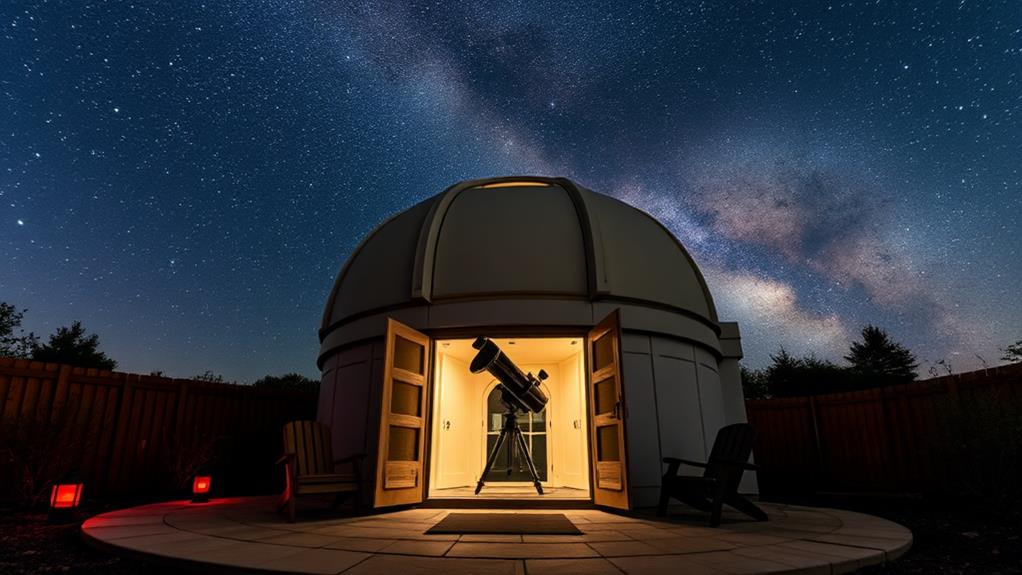
Equipping your backyard observatory with the right tools sets the stage for successful stargazing sessions. A quality telescope is the cornerstone of any observatory. Choose between refractor, reflector, or compound designs based on your observing goals and budget. Consider motorized mounts for precise tracking of celestial objects.
Eyepieces are crucial for varying magnification levels. Invest in a range of focal lengths to accommodate different viewing scenarios. A Barlow lens can effectively double your eyepiece collection by increasing magnification. Include filters to enhance contrast and reveal subtle details in planets and deep-sky objects.
A sturdy observing chair promotes comfort during long sessions. Install red lighting to preserve night vision while navigating the observatory. A planetarium software program helps plan observations and locate objects. Don't forget essential accessories like a collimation tool, star charts, and a logbook to record observations.
For astrophotography, add a high-quality camera and adapters. Consider a remote shutter release and an autoguider for long-exposure shots. Lastly, include cleaning supplies to maintain your equipment, ensuring optimal performance and longevity of your stargazing gear.
Power and Connectivity Considerations
While equipping your observatory with the right instruments is vital, ensuring a reliable power supply and connectivity is equally important for seamless stargazing experiences. Consider installing a dedicated electrical circuit for your observatory to prevent overloading and potential power interruptions. Opt for weather-resistant outdoor outlets and use surge protectors to safeguard your sensitive equipment from electrical fluctuations.
For uninterrupted observations, invest in a backup power source such as a deep-cycle battery or an uninterruptible power supply (UPS). This precaution will allow you to continue your stargazing session even during unexpected power outages. Additionally, ensure proper cable management to avoid tripping hazards and maintain a clutter-free environment.
Reliable internet connectivity is crucial for accessing star charts, updating equipment firmware, and sharing your observations. Install a robust Wi-Fi extender or consider a wired Ethernet connection for stable internet access. For remote observatories, explore satellite internet options or cellular data solutions to maintain connectivity. Lastly, implement a local area network (LAN) within your observatory to facilitate seamless communication between your various astronomical devices and computers, enhancing your overall stargazing efficiency and data management capabilities.
Comfort and Convenience Features
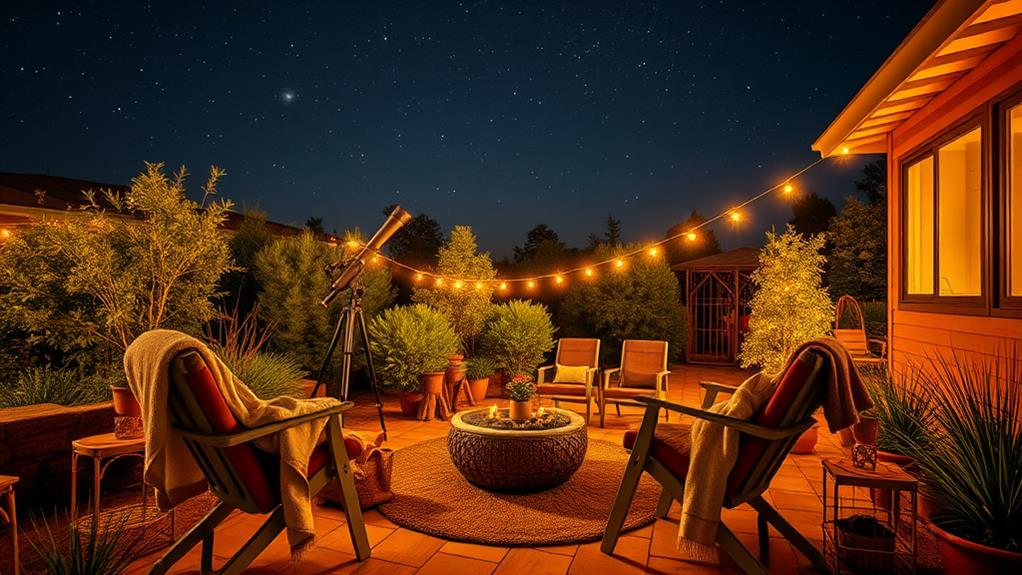
Numerous comfort and convenience features can transform your backyard observatory into a cozy and efficient stargazing haven. Consider installing adjustable seating options, such as ergonomic chairs or an observing stool, to maintain comfort during long viewing sessions. A small desk or workstation can provide space for note-taking, equipment storage, and computer use.
Climate control is crucial for both observer comfort and equipment longevity. Install a combination heating and cooling system to maintain optimal temperatures year-round. Proper ventilation helps prevent condensation on optics and reduces thermal currents that can distort views.
Red lighting is essential for preserving night vision while allowing safe movement within the observatory.
Incorporate storage solutions like cabinets or shelving units to keep equipment organized and protected. A mini-fridge can store refreshments and help regulate humidity for sensitive electronics. Consider adding a small dehumidifier to further control moisture levels.
For convenience, install USB charging ports and easily accessible power outlets throughout the space. Finally, a intercom or communication system can facilitate coordination with indoor observers or assistants during group stargazing sessions.
Maintenance and Weather Protection
To ensure the longevity and optimal performance of your backyard observatory, implementing a rigorous maintenance routine and robust weather protection measures is essential. Regular cleaning of optics, mirrors, and electronics is crucial to maintain image quality and prevent equipment degradation. Develop a schedule for checking and lubricating moving parts, such as dome rotation mechanisms and telescope mounts.
Weather protection is paramount for preserving your observatory and its contents. Install a dehumidifier to control moisture levels and prevent fungal growth on optical surfaces. Consider adding a ventilation system to regulate temperature and reduce condensation. Weatherproof seals around doors and windows are vital to keep out dust, insects, and precipitation.
Invest in high-quality covers for your telescope and other instruments when not in use. Implement a lightning protection system to safeguard sensitive electronics. Regularly inspect the observatory structure for signs of water ingress or pest intrusion. Address any issues promptly to prevent more significant problems. By prioritizing maintenance and weather protection, you'll ensure your backyard observatory remains a functional and enjoyable stargazing haven for years to come.
Frequently Asked Questions
How Much Does It Cost to Build a Backyard Observatory?
The cost of building a backyard observatory varies significantly, ranging from $5,000 to $50,000 or more. Factors influencing price include size, equipment, materials, and location. DIY options can reduce expenses, while high-end installations increase costs substantially.
Do I Need Special Permits to Construct an Observatory?
Wondering about permits for your observatory? Generally, you'll need to check local zoning laws and building codes. Many areas require permits for structures exceeding certain sizes or heights. Consult your local planning department for specific requirements in your jurisdiction.
Can I Use My Observatory for Astrophotography?
Absolutely. Observatories are ideal for astrophotography, providing a stable platform and protection for equipment. With proper mounting, you can capture stunning celestial images. Ensure your observatory design accommodates necessary photographic equipment and computer systems for optimal results.
How Long Does It Take to Build a Backyard Observatory?
Did you know 37% of amateur astronomers have home observatories? Building a backyard observatory typically takes 2-6 months, depending on complexity, permits, and construction methods. Prefab options can reduce this timeframe significantly, while custom builds may take longer.
Will an Observatory Affect My Home's Resale Value?
A backyard observatory can potentially impact your home's resale value. While it may appeal to astronomy enthusiasts, some buyers might view it as a specialized feature. Consider local market trends and potential buyer preferences when assessing its impact.
Conclusion
The juxtaposition of terrestrial construction and celestial observation underscores the human drive to bridge the gap between Earth and sky. A well-designed backyard observatory serves as a portal to the cosmos, transforming ordinary space into an extraordinary vantage point. By carefully considering location, structure, equipment, power, comfort, and maintenance, stargazers can create a sanctuary that both protects delicate instruments and nurtures scientific curiosity. This fusion of practical architecture and astronomical aspiration exemplifies humanity's enduring quest to understand the universe.
